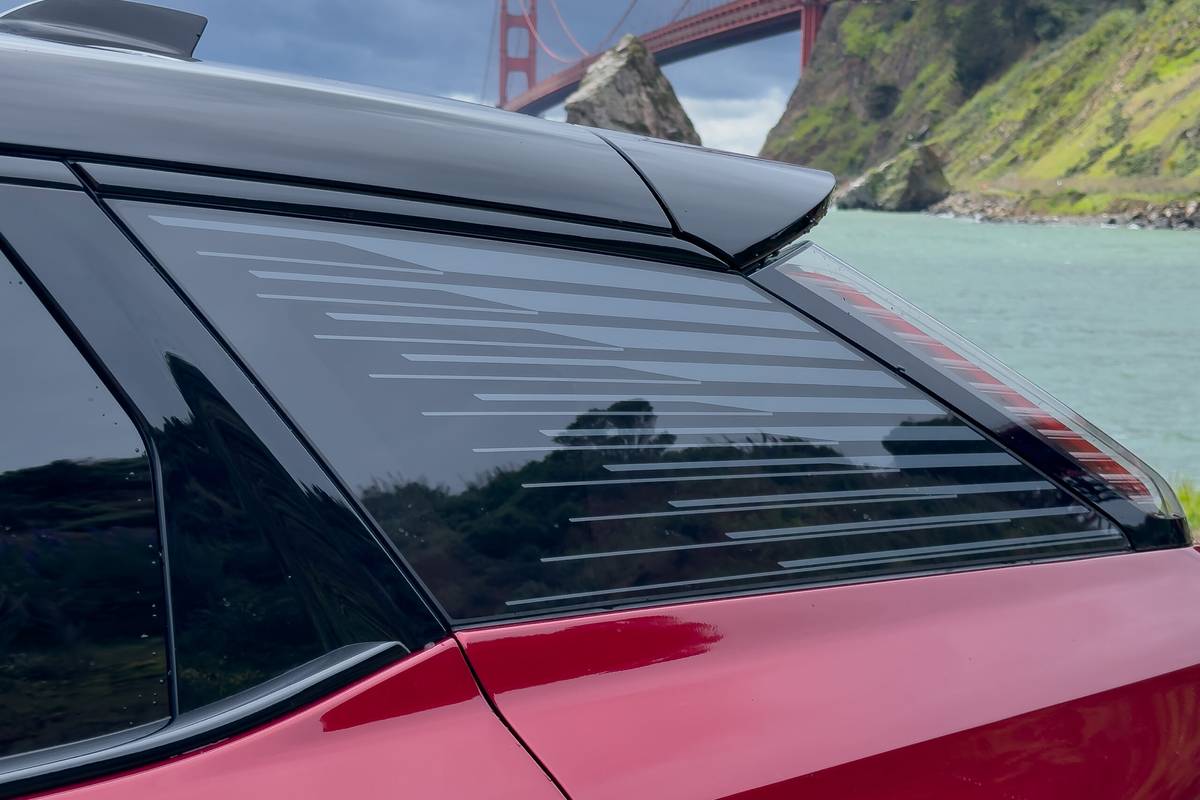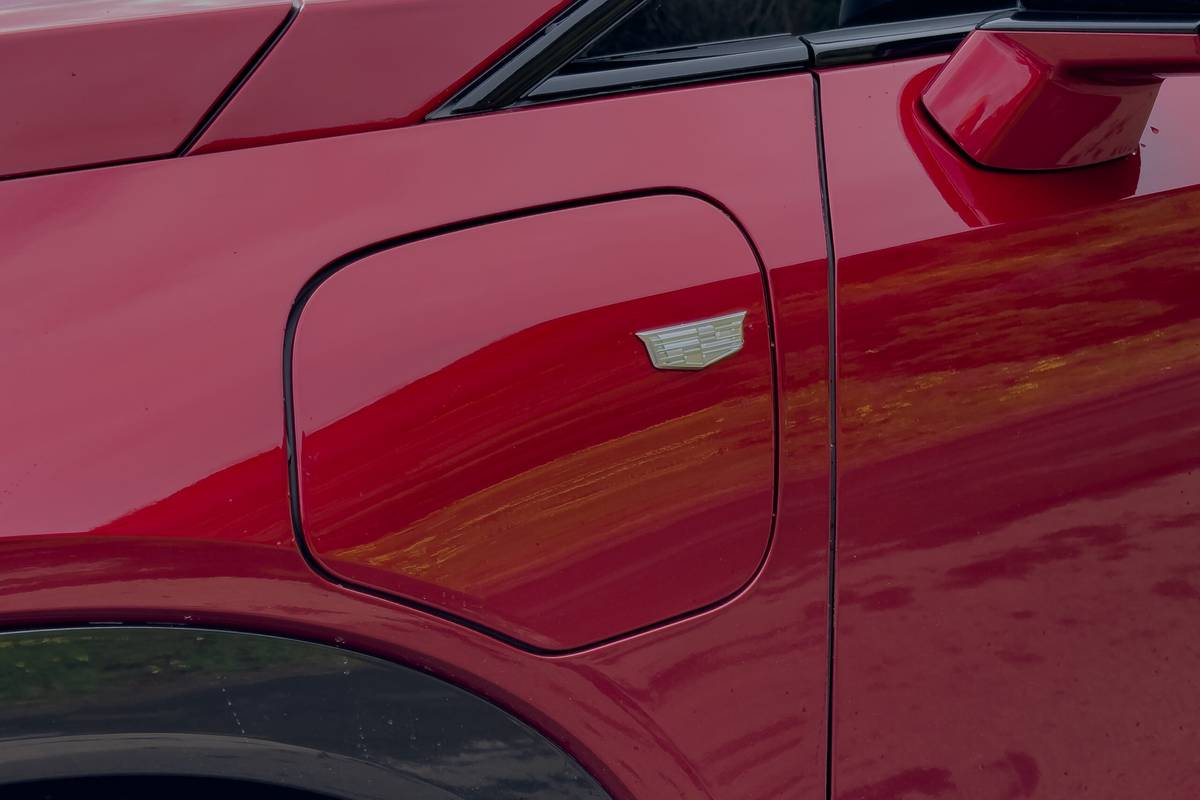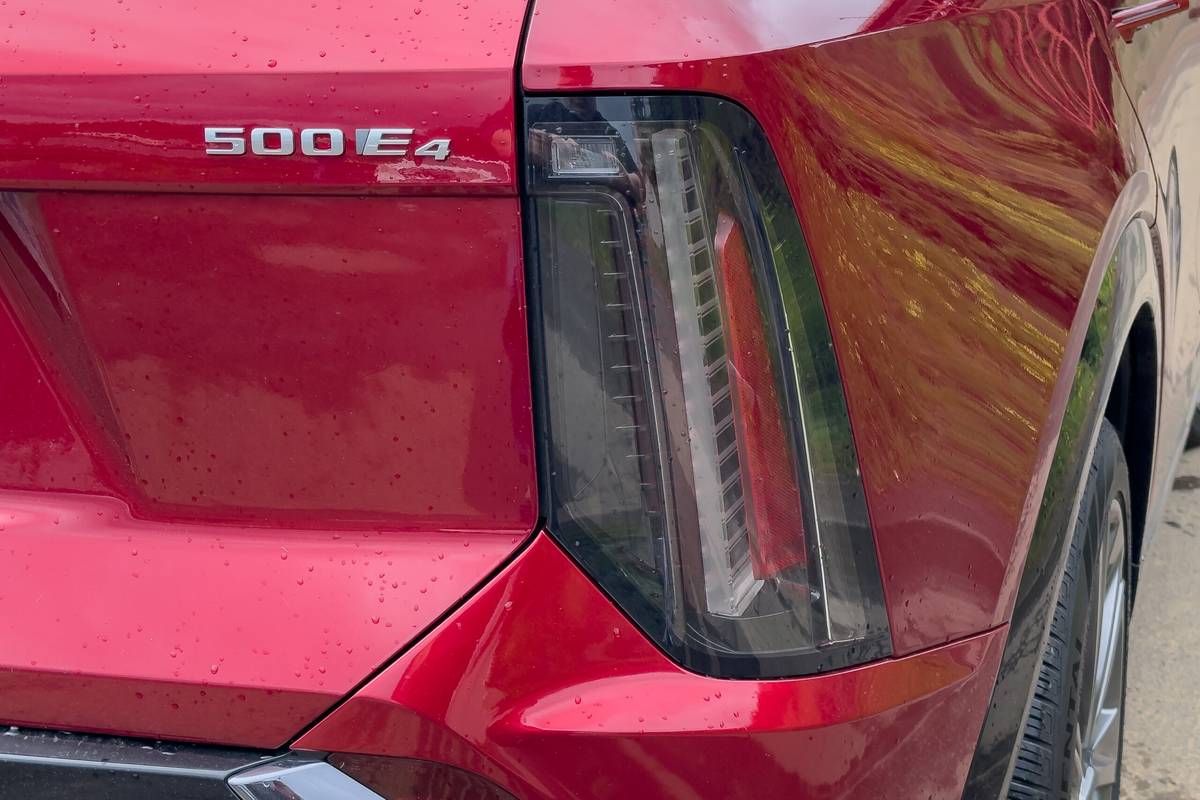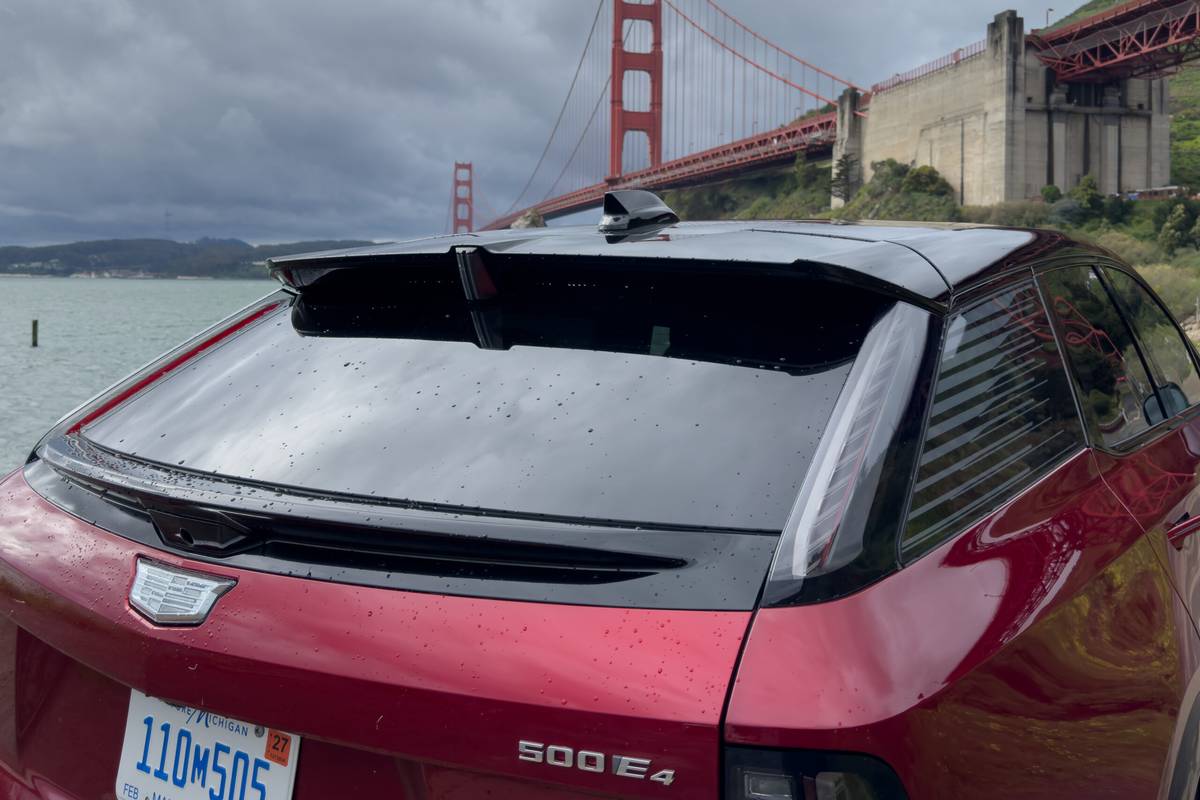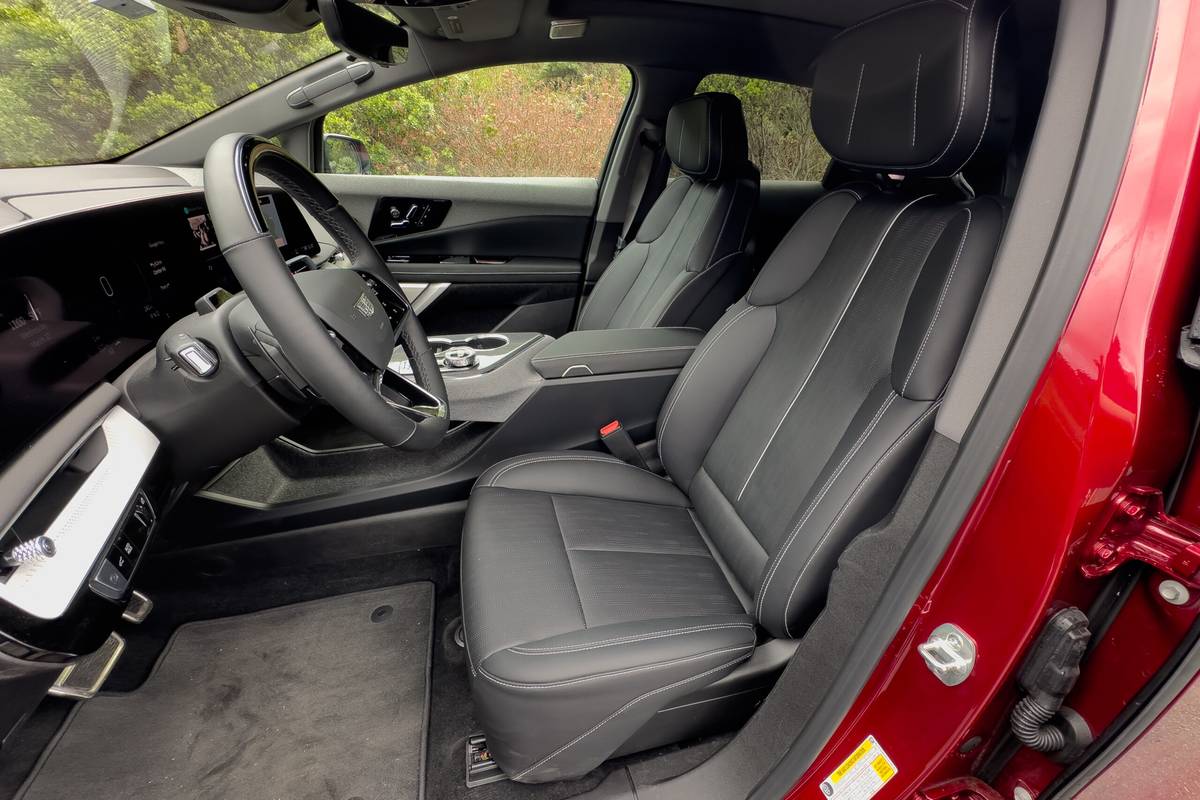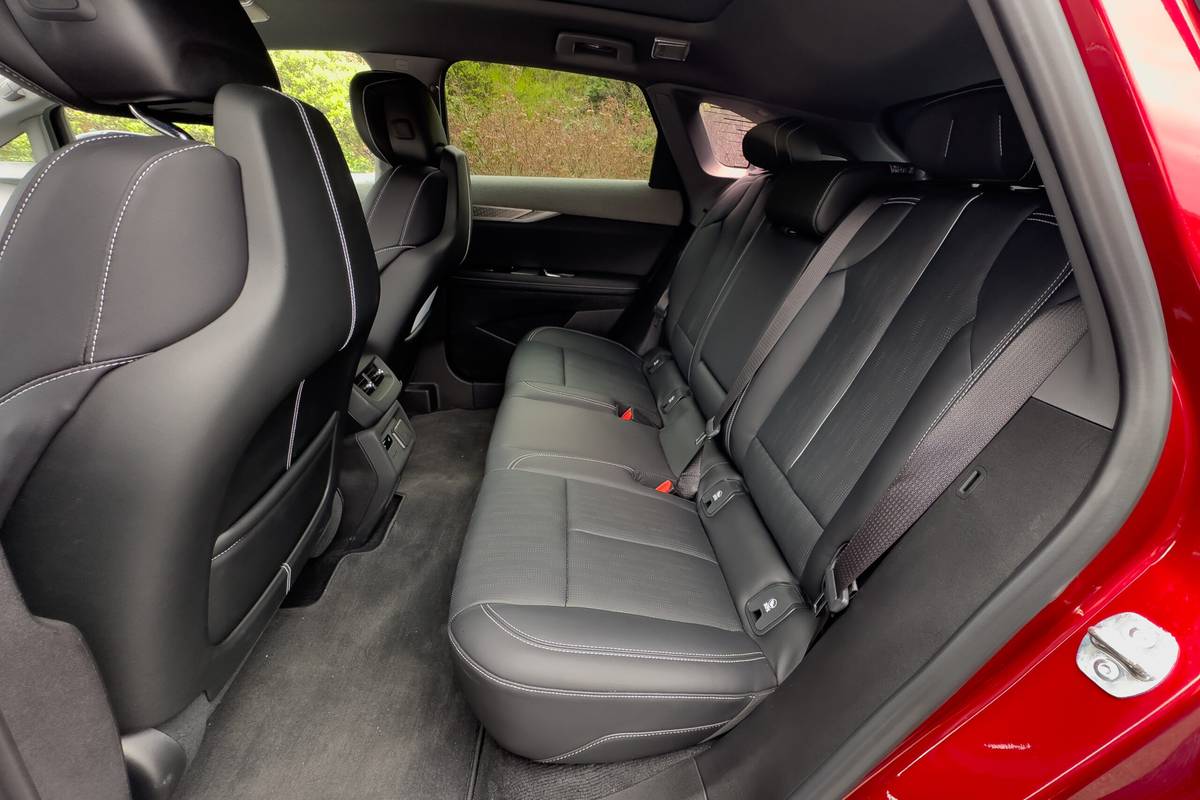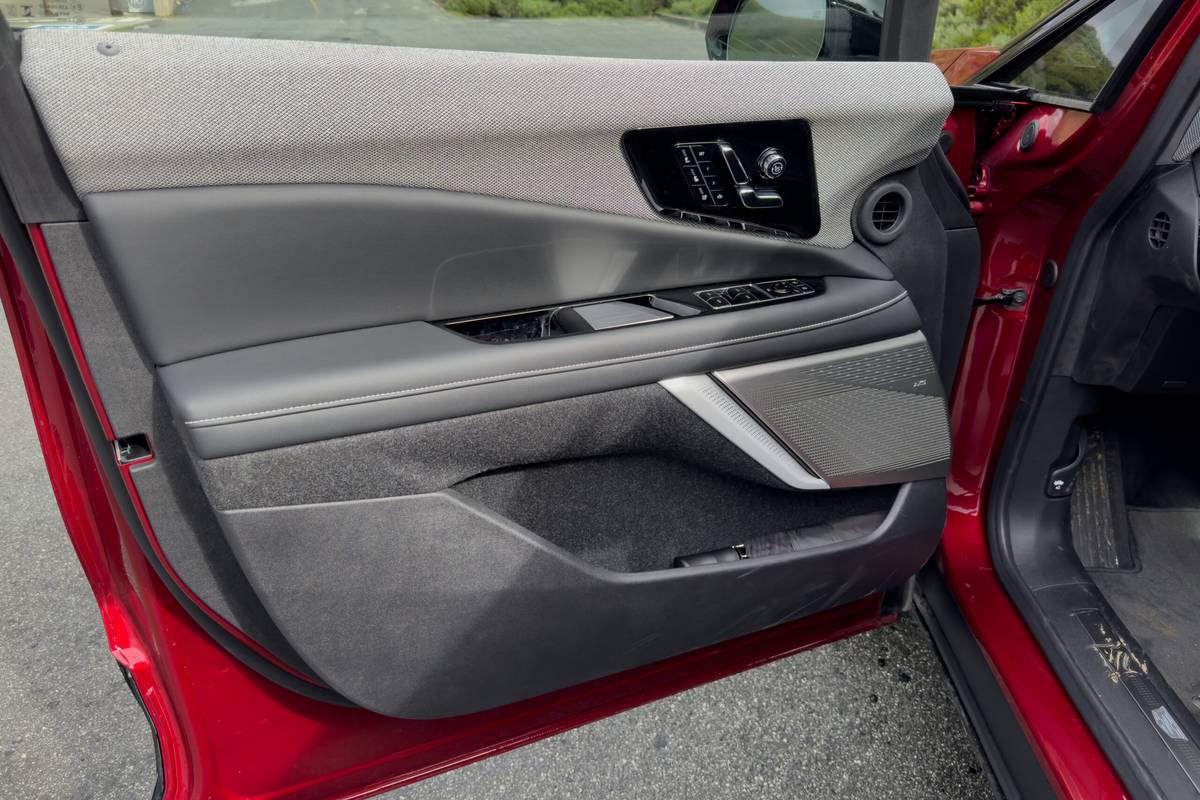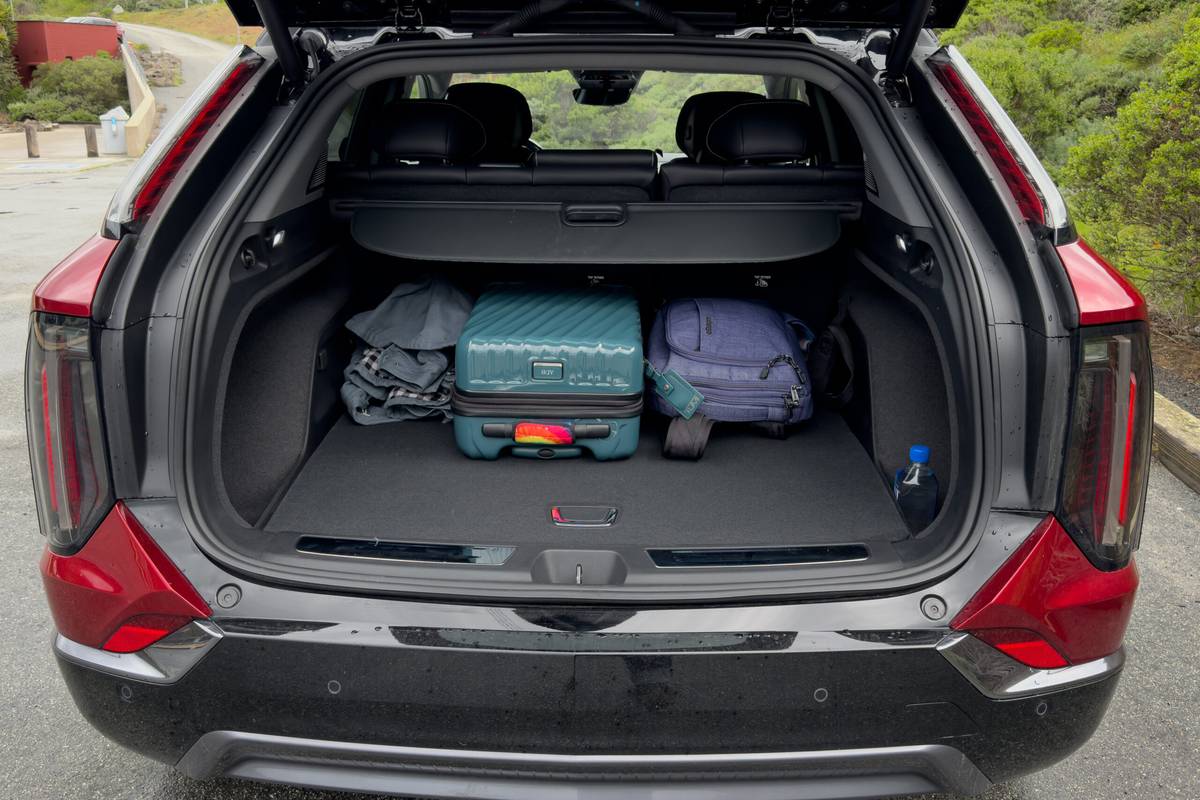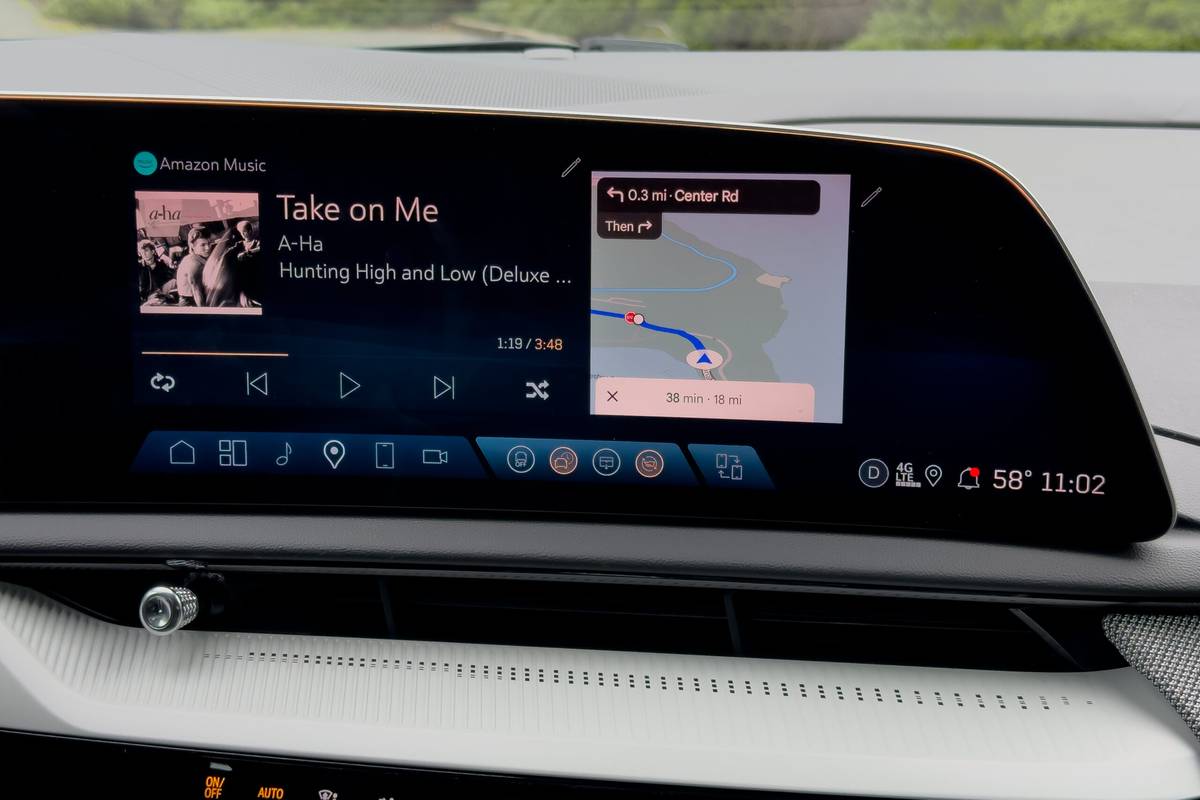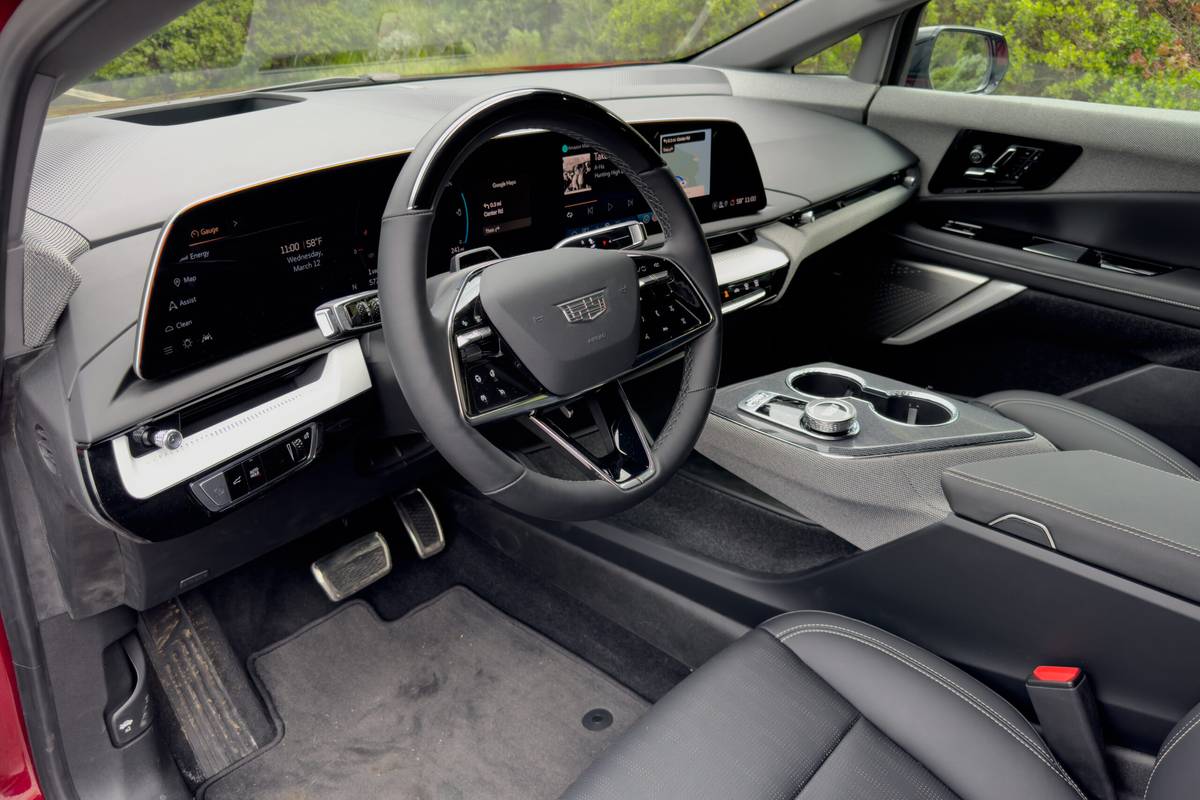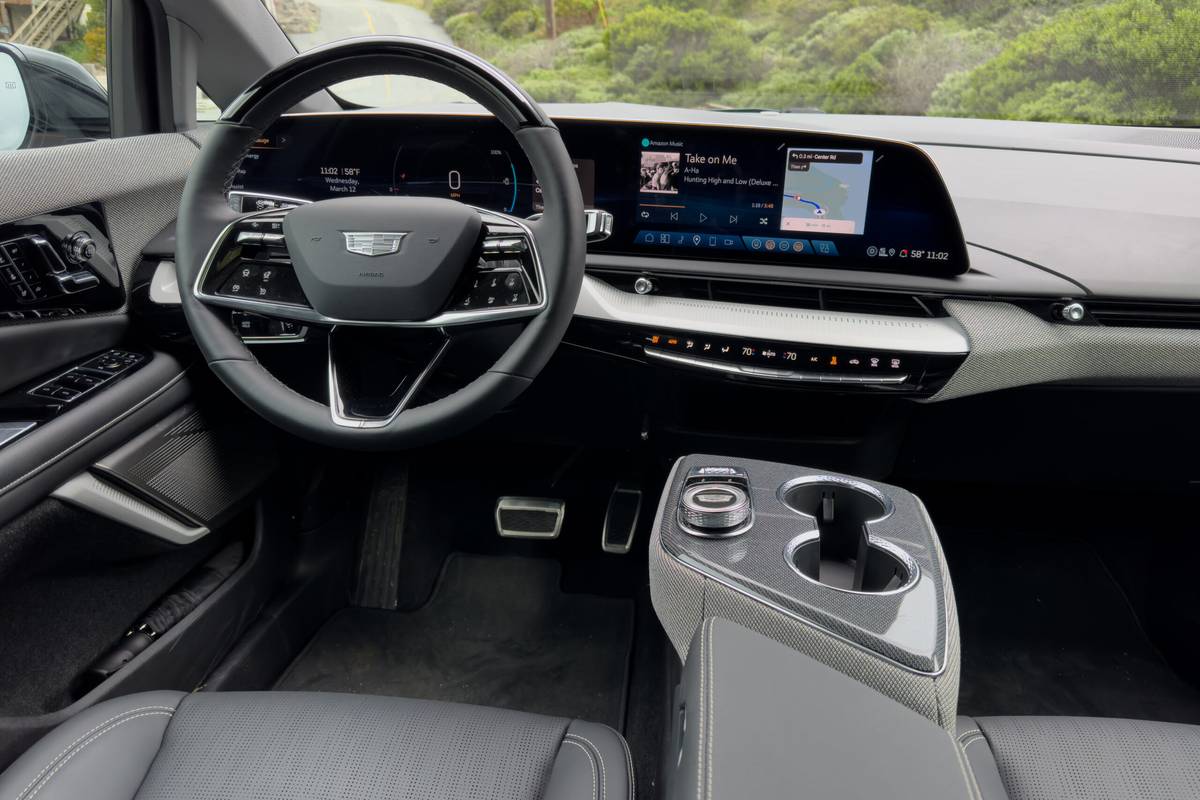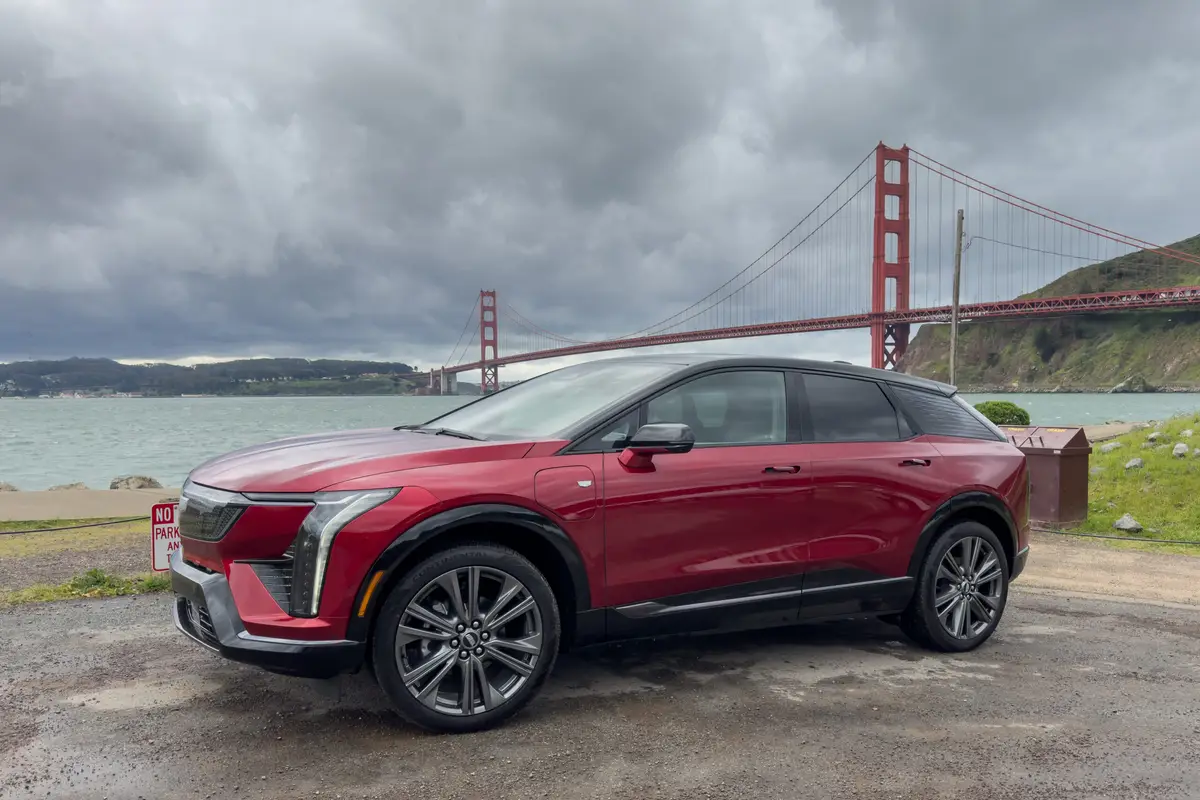
Is the Cadillac Optiq a Good Car?
- The all-new 2025 Cadillac Optiq features all the great qualities of the luxury brand’s bigger Lyriq electric SUV, but in a tidier, more maneuverable and equally upscale package.
How Does the Cadillac Optiq Compare With Other Electric SUVs?
- The Optiq feels more opulent inside, better organized and more conventional in its operation, with more advanced technology than rivals like the Audi Q4 e-Tron, Mercedes-EQ EQB SUV and Volvo EX40.
Cadillac has just about completed the introduction of its full line of new electrified SUVs, with automotive media now having had some seat time in the models that will bookend the lineup: the new 2025 Cadillac Escalade IQ flagship, and this, the new 2025 Cadillac Optiq entry-level compact model. The Optiq is the least expensive model in Cadillac’s electric SUV lineup, starting at around $54,000 (all prices include destination fee) and competing with models like the Mercedes-EQ EQB SUV, Volvo EX40, Tesla Model Y and Audi Q4 e-Tron. The two-row, five-seat Optiq slots below the slightly larger, more expensive Lyriq SUV and the Vistiq three-row SUV.
After driving the Optiq for a day, I can say that entry-level most definitely does not mean cheap — the electric SUV’s impressive driving dynamics, solid quality, eye-popping tech and bountiful comfort vault it to the top of the entry-luxury electric SUV set.
Related: 2025 Cadillac Optiq: Caddy’s Smallest EV Is Revealed
How Much Does the 2025 Cadillac Optiq Cost?
The new Optiq is meant to be the gateway vehicle to Cadillac’s electric SUV range, and it’s priced as such. Like most Cadillac products, there are two tracks you can take (Luxury or Sport) that are mostly about appearances — Luxury has the blingy chrome, while Sport tends to eschew the glitz in favor of blacked-out trim, but content between the two paths is largely the same. The Optiq has standard dual-motor all-wheel drive, and all prices below include a destination fee of $1,495:
- Luxury 1: $54,390
- Sport 1: $54,990
- Luxury 2: $56,590
- Sport 2: $57,090
The Optiq’s pricing is spot on with other luxury brands’ entry-level electric SUVs. The 2025 Q4 e-Tron starts at $51,095, but that’s for a standard single-motor rear-wheel-drive model — for a comparable AWD model, you’re looking at $56,495. The EQB starts at $54,200 for a front-wheel-drive model with considerably less power than the Optiq, but for an AWD version, you’ll shell out a minimum of $58,350. So the Optiq is very appropriately priced, and as of publication, it also qualifies for a federal tax credit of up to $7,500.
How Does the Cadillac Optiq Drive?
The Optiq’s dual-motor electric powertrain pumps out 300 horsepower and 354 pounds-feet of torque, making it considerably more powerful than the standard 188-hp powertrain in an EQB, for one. Energy comes from an 85-kilowatt-hour lithium-ion battery pack, which gives the Optiq a decent 302 miles of estimated range.
The Optiq driving experience is remarkably refined. Yes, it’s heavy for its size — nearly 5,200 pounds, but all electric vehicles tend to be heavy; it’s the nature of their big batteries. That heft doesn’t make the Optiq feel poky or ponderous, however, as there’s plenty of zip from the twin-motor setup — especially when switched from Tour to Sport mode. The steering has heft to it, but it comes with precision and decent feedback, as well. The brakes are a little grabby in the last few feet when coming to a complete stop, but your challenge should be to not use them — the Optiq offers one-pedal driving as well as a steering-wheel paddle that activates regenerative braking. You can stop the vehicle completely using the paddle, and braking intensity varies based on how hard you pull on it.
But stopping isn’t any fun, it’s the going part that we enjoy more. And the Optiq goes just fine, with a smooth, well-damped ride even with its large optional 21-inch wheels and tires. Broken pavement or urban asphalt doesn’t faze the Optiq at all; the Caddy rides like a larger SUV in terms of its body motions and sophisticated control. But when roads turn twisty, it doesn’t embarrass itself like a large, heavy SUV would. It won’t be anyone’s first choice for sporty, athletic driving, but it won’t make passengers woozy with odd rolling motions or tippiness like many other SUVs would. Cadillac’s brilliant chassis engineers have done it again — they’ve taken an SUV and made it feel both smaller than it is and smoother than you’d expect.
Does the Cadillac Optiq Have a Nice Interior?
The interiors of GM’s EVs are a mixed bag. All of them look good, from the Cadillacs to the Chevrolets to the Hummers. But many of them don’t feel good due to thin materials, cheap construction and clear cost-cutting efforts to try and offset how expensive their big batteries are. But the exceptions generally are the smaller Cadillacs like the Lyriq (to some extent) and the Optiq; they both look and feel good, with the Optiq’s interior in particular making a significant impression.
The materials choices play a large part — not only are a lot of the interior materials unique (like the flocked material on the lower door inserts and the coarse woven fabric covering the dash, doors and console), but they’re also made of 100% recycled materials. That unusual fabric on the door tops and dash is made of 100% recycled polyester, as are the carpets throughout the Optiq’s interior. We’ll see how well they hold up to stains and environmental challenges, but on initial encounter, the Optiq’s interior might be the nicest environment of all the Cadillac EVs so far.
The interior is also surprisingly spacious for four or five people. Even though it’s a compact SUV on par with the Chevy Equinox EV in terms of exterior size, there’s plenty of room for front and rear passengers — even plentiful headroom and legroom for the backseaters. Putting the electronic seat adjusters on the doors instead of the sides of the seats is a neat touch that lets you easily adjust the seats and also allows for seat width to be maximized since precious space alongside the seat bottoms is not reserved for seat controls. The only gripe is with the odd rotary multifunction controller for lumbar and massage features, which doesn’t have clear on-screen instructions, either.
How Is the Cadillac Optiq’s Technology?
If you’ve spent any time in the Lyriq, the screen tech in the Optiq will be familiar. It uses the same 33-inch diagonal display that incorporates both a reconfigurable digital driver display and dual touchscreens that we’ve found to be excellent to use. A small touchscreen to the left of the driver display enables easy, quick reconfiguration of the gauge cluster, while the larger center touchscreen handles most other controls. As in other GM EVs, the multimedia system and displays run on Google Built-In; Apple CarPlay is not available, and while you can stream music from an iPhone, the level of interaction pales in comparison to what you get with a signed-in Google account. GM really, really wants you to join the Google universe, whether you want to or not. Why? Because the automaker gets a cut of the subscriptions you’ll need to make all the features in your new Optiq work, from navigation to Super Cruise hands-free cruise control.
One benefit of signing up for everything is that you’ll get to enjoy a sound system featuring Dolby Atmos. It’s one of the few instances the 3D spatial sound imaging technology has appeared in an automobile (Lucid and Mercedes-Benz also use it). It lets you play specially prepared songs through streaming subscription services (currently limited to Tidal or Amazon Music, but more apparently are on the way), which duplicates the sound in the manner of a recording studio so you get some of the most extraordinary music playback experiences you’ve ever had in a car. Figuring out how to use it (and which of the streaming services will feature it) is something that the Optiq’s younger, tech-savvy target audience will likely have no issue with.
Super Cruise is standard on every Optiq, with a three-year subscription included at purchase that will eventually need to be renewed. All of the Optiq’s safety features are also standard, including blind zone steering assist, adaptive cruise control, automatic emergency braking and a whole lot more. It’s a nice differentiator from the German luxury brands, which tend to nickel-and-dime their customers for advanced electronic safety features.
More From Cars.com:
- 2025 Cadillac Optiq: Caddy’s Smallest EV Priced From $54,390
- 2025 Cadillac Optiq Up Close: The Lyriq-Lite Looks Good
- Owners of GM Electric Vehicles Can Now Use Tesla Superchargers
- Electric Cars With the Longest Range
- Shop for a 2025 Cadillac Optiq Near You
Should You Buy a 2025 Cadillac Optiq?
As an entry-level electric offering in the Cadillac brand meant to get people on the path of successively larger, more opulent models during their lifetime, the Optiq is a smash hit. It’s a far nicer offering than anything Tesla has produced and also makes competitors from Polestar, Audi, Volvo and Mercedes-Benz look a little half-baked. The Optiq is filled with beautiful shapes and interesting colors and textures, eminently comfortable for four people, and blessed with acceptable range and posh driving performance. It’s even attractively priced.
The only thing that gives me pause about recommending it wholeheartedly is the lack of support for the roughly 50% of consumers who are enmeshed in the Apple technosphere. GM’s continued insistence of not offering Apple CarPlay in its new EVs remains an egregious slight and is sure to turn off many potential customers (and the reasons GM has given for its course of action continue to befuddle, especially since the 2025 Lyriq does have Apple CarPlay). If shoppers can overlook this important missing feature, the new Optiq offers a lot of not-so-entry-level EV goodness.
Related Video:
We cannot generate a video preview.
Cars.com’s Editorial department is your source for automotive news and reviews. In line with Cars.com’s long-standing ethics policy, editors and reviewers don’t accept gifts or free trips from automakers. The Editorial department is independent of Cars.com’s advertising, sales and sponsored content departments.



















